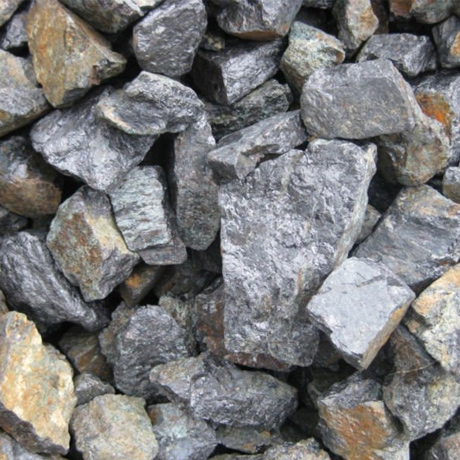Titanium
About Titanium :
Titanium is a chemical element with the symbol Ti and atomic number 22. It is a lustrous transition metal with a silver colour, low density, and high strength. Titanium is not a rare element, its the 9th most common element, accounting for 0.6 % of the earth's crust. Titanium is resistant to corrosion in sea water, aqua regia, and chlorine. Titanium is the ninth most abundant metal in Earth's crust. It is almost always present in igneous rocks and the sediments derived from them. It occurs in the minerals ilmenite, rutile and sphene and is present in titanates and many iron ores.
Titanium can be alloyed with iron, aluminium, vanadium, and molybdenum, among other elements, to produce strong, lightweight alloys for aerospace (jet engines, missiles, and spacecraft), military, industrial processes (chemicals and petrochemicals, desalination plants, pulp, and paper), automotive, agriculture (farming), medical prostheses, orthopaedic implants, dental and endodontic instruments and files, dental implants, sporting goods, jewellery, mobile phones, and other applications.
The two most useful properties of the metal are corrosion resistance and the highest strength-to-weight ratio of any metal. In its unalloyed condition, titanium is as strong as some steels, but less dense. It is the only element that will burn in pure nitrogen gas.
As a metal, titanium is recognized for its high strength-to-weight ratio. It is a strong metal with low density that is quite ductile (especially in an oxygen-free environment), lustrous, and metallic-white in colour. The relatively high melting point (more than 1,650 °C or 3,000 °F) makes it useful as a refractory metal. It is paramagnetic and has fairly low electrical and thermal conductivity compared to other metals. Titanium is superconducting when cooled below its critical temperature of 0.49 K. Titanium is not as hard as some grades of heat-treated steel; it is non-magnetic and a poor conductor of heat and electricity. Machining requires precautions, because the material can gall unless sharp tools and proper cooling methods are used. Like steel structures, those made from titanium have a fatigue limit that guarantees longevity in some applications. Because of its bountiful reserves and excellent bio-friendliness, titanium is a material friendly to the environment and humans. Through research and development this material has revealed nearly infinite possibilities one after another. The specific strength of Titanium is twice that of low carbon steel and approximately three times of aluminium. Mass of Titanium is approx. 60% of low carbon steel and stainless steel. Thermal expansion is as low as ½ of SUS, 1/3 of aluminium. It does not need any coating making it a no maintenance metal. It is an excellent corrosion resistant metal especially to sea water and salt water. It is found in meteorites, on the Moon, and in some types of stars.
Uses of Titanium :
- Titanium oxide is a very good sensor material, so if it is integrated with a computer chip then it acts like a smart sensor.
- In medicine, titanium implants are used to replace or stabilize broken bone. Titanium metal connects well with bone, so it has found surgical applications such as in joint replacements (especially hip joints) and tooth implants.
- Tiny titanium implants are even used to improve hearing in people with some types of deafness. A screw-like titanium rod is drilled into the skull behind the ear and attached to an external sound-processing unit. The external unit picks up sounds and transmits the vibration through the titanium implant to the inner ear, bypassing any problems in the middle ear.
- Titanium is as strong as steel but much less dense. It is therefore important as an alloying agent with many metals including aluminium, molybdenum and iron. These alloys are mainly used in aircraft, spacecraft and missiles because of their low density and ability to withstand extremes of temperature.
- It is also used in golf clubs, laptops, bicycles and crutches. Titanium oxide is often used with graphite to make high-end golf clubs and tennis rackets.
- Power plant condensers use titanium pipes because of their resistance to corrosion. Because titanium has excellent resistance to corrosion in seawater, it is used in desalination plants and to protect the hulls of ships, submarines and other structures exposed to seawater.
- The largest use of titanium is in the form of titanium(IV) oxide. It is extensively used as a pigment in house paint, artists’ paint, plastics, enamels and paper. It is a bright white pigment with excellent covering power.
- It is also a good reflector of infrared radiation and so is used in solar observatories where heat causes poor visibility.
- Titanium (IV) oxide is used in sunscreens because it has the ability to greatly absorb UV light .As it is gentle, titanium dioxide is a great sunscreen active for sensitive, redness-prone skin.
- Titanium containers are used to store nuclear waste.
- Titanium has become more popular for jewellery in recent years.
Properties of Titanium
| Atomic symbol | Ti |
|---|---|
| Atomic number | 22 |
| Atomic radius, empirical | 147 pm |
| Electron configuration | [Ar] 3d24s2 |
| Density | 4.506 g/cm3 |
| Melting point | 1670°C, 3038°F |
| Boiling point | 3287°C, 5949°F |
| Relative atomic mass | 47.867 |
| Key isotopes | 48Ti |
| Covalent radius | 160±8 pm |
| Young’s modulus | 116 GPa |
| Electronegativity Pauling scale | 1.54 |
| Heat of fusion | 14.15 kJ/mol |
